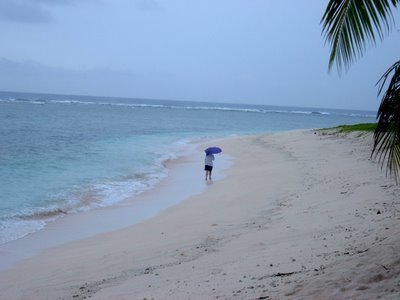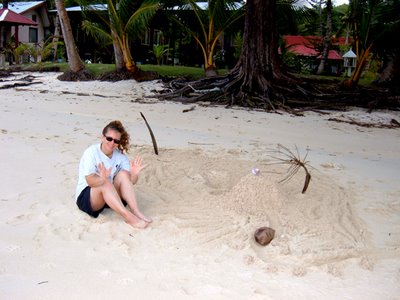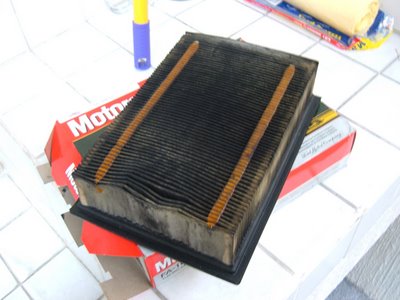The Micronesia Nostalgia Tour 2006: Guam
Much like Shelly felt in Palau, I was excited to be back on Guam. It was my home for three years in the late 1990s, and I had kept in touch with a number of friends I was looking forward to seeing again. While on Guam, I made most of my income by writing about tourism and construction, and I was especially interested in seeing how those industries were doing.
Guam is truly a tropical paradise. It serves as a great tropical destination for much of Asia, especially the Japanese, more than a million of whom flock to Guam every year for a bit of sun, sand and the ability to say they had visited America. Guam, as the slogan goes, is where America's Day Begins.
The sand was great. It was nice to be back in America for a few days. But the sun was missing. "It's the first time we've had rain in two months," the hotel staff assured us as we looked at the beach out the lobby's rain-streaked windows. "It will go away."
And it did, mostly. And with as much shopping as we wanted to do, to buy all those things we can't buy overseas, a bit of rain didn't really cause us any problems.
It did, however, rain on our trip to Ritidian Beach at the northern tip of Guam. The land is a national wildlife preserve, the beach is among the island's most beautiful and the current among the most dangerous. It's also blissfully deserted most weekdays, making it a great place for some private time on the sand.
Due perhaps to its isolated location, it's also a great place to look for shells.
It's also a federal crime to take any of them home with you.
This trip to Guam was the first time I had been on the island without a car, so we hopped aboard the trolley and played tourist for the first day. It's tough to get around Guam without a car, though, so we picked one up for the rest of our visit.
Shopping took us from the Micronesia Mall, where we found a hip carabao, to the world's largest Kmart. Because I profiled the Guam Kmart way back when, I know this was, at least in the 1990s, a true statement. Because of the vagaries of trans-oceanic shipping, the store has a huge warehouse floor built under the main sales floor. Kmart is as crowded as ever, and even sells groceries now.
Thanks to my friend Val, who I used to work for at the Pacific Daily News, we found a good deal at a hotel in the tourist district, which allowed us to walk to dinner most nights. In turn, walking to dinner allowed us to drink more beer and wander back home rather sliding behind the wheel and menacing Japanese pedestrians. Walking to dinner also allowed us to ponder just what kind of strip joint calls itself Wet Kitty. I mean, are the strippers all whiny and complainy, like Mister Tanaka was the one time I had to give him a bath?
We ate like we were American again: Mexican, Italian, Subway (the one time I went to Subway in Manila, well, was the last time I went to Subway in Manila) and, of course, the Hot and Spicy Spam Fried Rice at Shirley's, an extremely popular local joint along the lines of a Denny's or Perkins.
Like elsewhere in the USA, it is elections time on Guam. Elections on Guam bring about a proliferation of billboards unlike any I've seen elsewhere in the States. The primary election had been held just prior to our arrival on island so while there are probably a few less billboards now, most of them will probably stay up well beyond the general election.
With a rental car, we were able to tour the entire island, including the bay at Umatac (where Magellan landed back in the 16th century), the old saltwater swimming pool at Inarajan (where, to nobody's surprise, I tripped and fell on the coral limestone structure in the background of this photo), Asan Beach (where American marines and soldiers died in droves while recapturing Guam from Japan during World War II) and the Rotating Pope in Hagåtña. John Paul II rotated only briefly while I lived on Guam; he now appears to be facing the cathedral in Hagåtña more or less permanently.



When the sun finally came out, we had an awesome view of Tumon Bay from our hotel room. Thanks again, Valerie!
Best of all, I was able to see loads of friends at the newspaper and at the Lutheran Church of Guam, as well as a good friend who went to grad school with Dad back in the 1960s and a former coworker who is now working for TSA at the airport and recognized me while screening my suitcase.










































